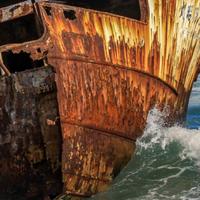Spanish Shipwrecks, Tree Rings Teach Researchers About Past Hurricanes
|||Tree Rings|||||
스페인 난파선, 나이테가 연구자들에게 과거 허리케인에 대해 가르쳐줍니다.
Испанские затонувшие корабли и кольца деревьев рассказали исследователям о прошлых ураганах
Іспанські корабельні аварії та кільця дерев вчать дослідників про минулі урагани
Old shipwrecks are silent, mysterious relics of the past that like to hold on to their secrets.
|old shipwrecks||||artifacts|||||||||||
Old shipwrecks are silent, mysterious relics of the past that like to hold on to their secrets.
But new research says a string of shipwrecks in the Caribbean are telling us a lot about what the weather was like hundreds of years ago.
||||||||||Caribbean Sea|||||||||||||||
But new research says a string of shipwrecks in the Caribbean are telling us a lot about what the weather was like hundreds of years ago.
Scientists at the University of Arizona led the study, which was published March 7 in "The Proceedings of the National Academy of Sciences."
|||||||||||||||journal||||National Academy||
Scientists at the University of Arizona led the study, which was published March 7 in "The Proceedings of the National Academy of Sciences."
By examining records of a Spanish shipwrecks that occurred from 1645 to 1715, along with tree-ring data, researchers discovered an interesting anomaly.
|analyzing|||||||||||||||||||irregularity
By examining records of a Spanish shipwrecks that occurred from 1645 to 1715, along with tree-ring data, researchers discovered an interesting anomaly.
During that time frame, which is known as the Maunder Minimum, the number of hurricanes in the Caribbean reduced by 75 percent.
|||period||||||Maunder Minimum|||||||||||
During that time frame, which is known as the Maunder Minimum, the number of hurricanes in the Caribbean reduced by 75 percent.
Study author Valerie Trouet says her team is the first to use shipwrecks to study historical hurricane weather.
||Valerie Trouet|Valerie Trouet||||||||||||||
Study author Valerie Trouet says her team is the first to use shipwrecks to study historical hurricane weather.
She added that in doing so, experts can better understand "hurricane variability" and make better regional predictions in the future.
|||||||||||hurricane variability||||area-specific|forecasts|||
She added that in doing so, experts can better understand "hurricane variability" and make better regional predictions in the future.
For NewsBeat Social, I'm Cambrie Caldwell.
||||Cambrie Caldwell|Cambrie Caldwell

